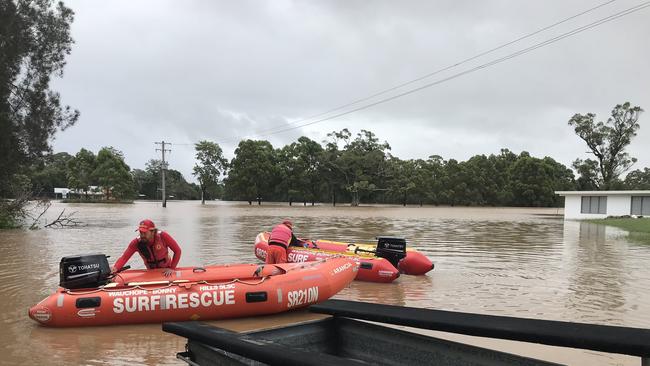‘A perfect storm’: What has caused NSW flooding and rain
Experts say it’s a rare combination of factors which have collided to trigger the record-breaking rain and flooding which has battered NSW.
NSW
Don't miss out on the headlines from NSW. Followed categories will be added to My News.
A “perfect storm” of weather conditions including a trough and high pressure system has sparked the dangerous weather front which has triggered massive rainfall and flash flooding across NSW.
With parts of NSW battered by record-breaking rainfall, including once-in-a-century rainfall in the mid north coast town of Kendall, many are wondering what has caused the wild weather conditions.
The weather situation in #NSW tonight remains volatile, dangerous & dynamic. Numerous #Warnings are in place & we're urging people to keep watch as the situation continues to evolve through tonight https://t.co/afsNh8GJeW. @NSWSES also providing updates https://t.co/MddcUaiY8Zpic.twitter.com/WsucmHfDaG
— Bureau of Meteorology, New South Wales (@BOM_NSW) March 20, 2021
According to Bureau of Meteorology duty forecaster David Wilke, it’s a rare combination of a high pressure system blocking a trough from moving offshore, warm ocean temperatures and La Nina.
“A strong high pressure system is sitting in the southern Tasman Sea and to the north that is directing onshore flows over the coast and that’s what we saw midweek with the offshore trough form,” he said.
“The fact we have this strong high pressure system which is not going anywhere, it’s not letting the trough move.”


A driving factor has also been the warmer-than-usual ocean temperatures, which have fuelled the moisture and humidity in the air.
“The sea surface temperature has been quite warm for this time of year, which helps provide a moisture source for the showers and increases the instability.”
The persistent, heavy rainfall has “compounded,” he said, resulting in already drenched waterways overflowing and causing major floods.
“It’s a perfect storm of factors … It’s not something that happens every week or month, but every year or two.
“To get these types of conditions with prolonged rainfall is normal but the intensity isn’t.”
La Nina has also meant the eastern coast of Australia has received more rainfall than usual.
“La Nina certainly helps because we get above average rainfall.”
The wild weather conditions are expected to continue on Sunday before they ease on Tuesday and Wednesday as the high pressure system moves offshore.



